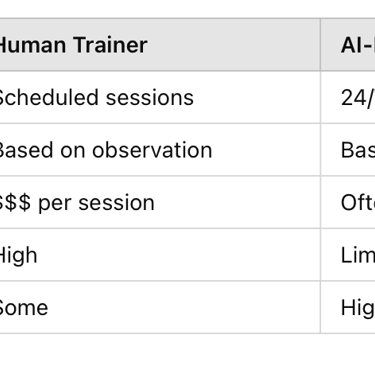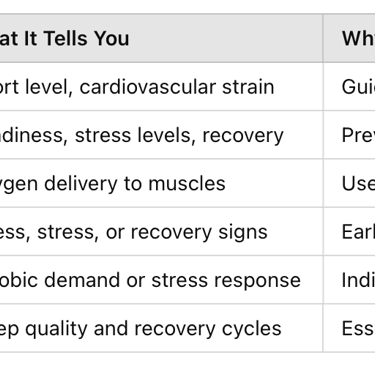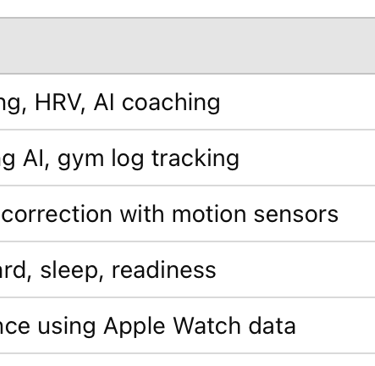
AI-powered personal trainers use artificial intelligence algorithms to deliver real-time, personalized workout guidance. These digital trainers adapt to your goals, performance, and progress—offering a dynamic experience that evolves as you do.
AI-Powered Personal Trainers & Biometric Tracking
The Future of Fitness Is Here
What Are AI-Powered Personal Trainers?
AI-powered personal trainers are digital platforms—apps, wearables, or smart fitness devices—that use artificial intelligence to guide, optimize, and personalize your workouts. These systems combine machine learning, data analytics, and sometimes even computer vision to help you train more effectively, whether you’re at home, in the gym, or on the move.
Unlike static workout plans or cookie-cutter fitness apps, AI trainers continuously adapt to your needs in real time. They analyze your exercise history, movement patterns, performance metrics, recovery data, and even biometric signals to deliver tailored guidance. This could mean adjusting your workout on the fly based on your heart rate, recommending a lighter session if your recovery score is low, or changing your rep scheme based on how quickly you completed your last set.
Some AI platforms even offer real-time form correction, count your reps automatically, or provide audio and visual feedback mid-session—functioning more like an interactive coach than just a training log.
Whether you're a beginner trying to build consistency, or an experienced athlete fine-tuning performance, AI-powered personal trainers bring a new level of precision, responsiveness, and personalization that traditional plans simply can't match.
At their core, these tools democratize elite-level coaching—giving anyone with a smartphone or wearable access to data-driven guidance once reserved for professional athletes.
How AI Trainers Work
At the core of AI-powered personal training is machine learning—a subset of artificial intelligence that enables systems to recognize patterns, make predictions, and improve over time. These platforms learn from your workout history, biometric data, movement patterns, and behavioral habits to deliver hyper-personalized training experiences.
Unlike static programs, AI trainers are dynamic. They continuously adapt your plan as new data becomes available—whether that’s a spike in heart rate during cardio, decreased range of motion in a squat, or signs of fatigue in your recovery metrics. Here’s what they’re capable of:
Create customized training programs tailored to your fitness level, goals, time availability, and equipment access. Whether you're aiming for fat loss, strength, hypertrophy, or endurance, the AI constructs a plan that evolves with you.
Adjust volume, intensity, and rest intervals in real time based on how you're performing. If you’re progressing faster than expected, it may increase your load. If your recovery is lagging, it may reduce your training volume for the day.
Offer movement corrections using computer vision, 3D motion tracking, or wearable sensors. Some platforms can assess your form via your smartphone camera or smart gym equipment, offering visual or auditory cues to correct improper technique—reducing the risk of injury.
Detect plateaus and modify variables automatically, such as switching from linear progression to undulating periodization, changing exercises, or inserting a deload week to prevent stagnation and overtraining.
Advanced platforms can even integrate with biometric data sources—like sleep quality, HRV, and nutrition tracking—to fine-tune your workouts for that day. It’s a constant feedback loop, where every rep, rest, and recovery moment helps inform your next move.
In short, AI trainers turn your data into action—removing the guesswork from your fitness journey and helping you train smarter, not just harder.
Human vs AI: Key Differences


Biometric Tracking: Listening to Your Body Like Never Before
Biometric tracking refers to the use of sensors and wearable devices to collect and analyze physiological data in real time. In fitness, this technology offers a window into your body’s inner workings—far beyond what the mirror, scale, or even a stopwatch can reveal.
Instead of guessing how hard you're working or how well you're recovering, biometric feedback provides concrete, data-driven insights. These include your heart rate, heart rate variability (HRV), blood oxygen saturation (SpO2), sleep quality, respiratory rate, skin temperature, and more. Many of these metrics were once only available in clinical or athletic lab settings—but now, they’re accessible on your wrist, ring, or chest strap.
By continuously monitoring these signals, biometric tracking helps you make smarter training decisions. It can identify patterns in your stress, alert you to signs of overtraining, optimize rest days, and even detect illness or under-recovery before you feel symptoms. For example, a drop in HRV paired with poor sleep data might signal that your nervous system needs a break—even if you feel ready to push.
In essence, biometric tracking transforms subjective feelings into objective metrics—turning your body into a source of actionable data for better, more personalized fitness.
Common Biometrics Used in Fitness Tech


The Wearable Ecosystem
Popular devices like Whoop, Garmin, Oura, Apple Watch, and Fitbit track dozens of biometrics in real time. These insights are now synced with AI-driven platforms to deliver smarter training recommendations.
Real-World Example: A Day in the Life
Let’s say your HRV score is lower than usual today. Your AI trainer might automatically:
Swap today’s strength session for a mobility or yoga session
Reduce your total training volume by 30%
Add a reminder for hydration and extra sleep
Re-evaluate your macro targets for the day
And if your recovery metrics bounce back tomorrow, your app will return to your regular program—or even introduce new challenges.
Beyond Fitness – A Holistic Health System
These systems don’t just optimize workouts—they contribute to holistic health:
Detect early signs of overtraining or illness
Help you stay consistent without burnout
Improve long-term outcomes like VO2 max and resting heart rate
Connect with nutrition platforms for macro/micronutrient adjustments
Top AI Fitness Platforms with Biometric Integration


Top AI Fitness Platforms with Biometric Integration
Limitations
Not ideal for highly complex training (e.g., Olympic lifts or sport-specific drills)
Lacks emotional intelligence and nuanced coaching
Dependent on data accuracy—if your wearable is off, so is the recommendation
Can become overwhelming for new users due to the sheer amount of data
Privacy & Data Ethics
Sensitive biometric data must be handled securely
Some platforms share user data with third parties for marketing
Look for platforms with strong data encryption and transparent policies
Is This the Future of Fitness?
The short answer: Yes, but not a complete replacement.
AI-powered personal trainers and biometric tracking are reshaping fitness as we know it. They empower users with insights, structure, and adaptability—taking the guesswork out of training. But human coaches still bring experience, empathy, and context that AI cannot replicate.
The best approach? A hybrid model—leveraging AI for data and precision while using human wisdom to guide high-level strategy.
Final Thoughts
Whether you're chasing your first 5K or sculpting a championship physique, the integration of AI and biometrics gives you a high-tech edge. This isn’t just about getting fit—it’s about training smarter, recovering better, and maximizing every rep, run, or rest day.
In 2025 and beyond, fitness will be data-driven, deeply personalized, and designed around you—thanks to AI-powered personal trainers and the silent intelligence of your body’s own signals.
References
Schoenfeld, B.J., & Grgic, J. (2018). Evidence-Based Guidelines for Resistance Training Volume to Maximize Muscle Hypertrophy. Strength and Conditioning Journal, 40(4), 107–112.
Statista Research Department. (2024). Wearable fitness technology market revenue worldwide 2016–2028.
https://www.statista.com/statistics/490231/wearable-device-market-value/Nature Scientific Reports. (2021). Wearable technology to capture sleep metrics: accuracy and limitations.
https://www.nature.com/articles/s41598-021-83453-xHarvard Health Publishing. (2020). Heart rate variability: A new way to track well-being. Harvard Medical School.
https://www.health.harvard.edu/blog/heart-rate-variability-a-new-way-to-track-well-being-2020100821185Whoop. (2024). What is HRV and Why It Matters.
https://www.whoop.com/thelocker/hrv/Oura Ring. (2024). Understanding Your Sleep Stages and Readiness Score.
https://ouraring.com/blog/sleep-readiness-score/Apple. (2025). How Apple Fitness+ uses real-time biometric feedback for smarter workouts.
https://www.apple.com/apple-fitness-plus/Fitbod. (2024). How Fitbod’s Algorithm Works.
https://fitbod.me/science/Tempo. (2024). Form Feedback Powered by Computer Vision.
https://tempo.fit/how-it-worksACSM (American College of Sports Medicine). (2023). Global Fitness Trends for 2023: Technology Tops the List Again.
https://www.acsm.org/blog-detail/acsm-certified-blog/2023/01/01/worldwide-fitness-trends-2023
